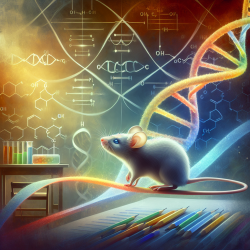Revolutionizing Understanding of Lewy Pathology: Insights from Mouse Models
In the quest to combat neurodegenerative diseases such as Parkinson’s Disease (PD) and Dementia with Lewy Bodies (DLB), understanding the mechanisms of alpha-synuclein aggregation and propagation is crucial. A recent study titled "Trans-synaptic and retrograde axonal spread of Lewy pathology following pre-formed fibril injection in an in vivo A53T alpha-synuclein mouse model of synucleinopathy" sheds light on these mechanisms, providing a promising avenue for developing disease-modifying therapies.
Key Findings from the Study
The study introduces a novel transgenic mouse model that expresses human A53T SynGFP, allowing for a detailed examination of Lewy pathology formation and propagation in the brain. Here are some of the pivotal findings:
- Initial Aggregation in Axons: The study demonstrates that alpha-synuclein aggregation begins in axonal structures and propagates retrogradely to the cell body, suggesting a retrograde trans-synaptic mechanism.
- Rapid Pathology Development: The model shows expedited development of alpha-synuclein pathology following induction with pre-formed fibrils (PFFs), leading to accelerated cell death of inclusion-bearing cells.
- Astrocytic Involvement: While neuronal inclusions develop first, a second wave of inclusion formation occurs in astrocytes, which survive longer than neurons after inclusion formation.
- Peripheral-to-Central Spread: The study provides evidence of progressive, retrograde trans-synaptic spread of Lewy pathology from peripheral to central nervous systems through neuroanatomically connected pathways.
Implications for Practitioners
These findings are groundbreaking for practitioners in the field of neurodegenerative research and therapy development. By understanding the mechanisms of Lewy pathology spread, practitioners can:
- Develop targeted therapies that can potentially alter the course of synucleinopathies.
- Explore new diagnostic tools that identify early signs of pathology spread.
- Engage in further research to explore the role of astrocytes and other non-neuronal cells in disease progression.
Encouraging Further Research
This study opens the door for further research into the molecular and cellular mechanisms of alpha-synuclein aggregation and propagation. Researchers are encouraged to build on these findings to develop innovative therapeutic strategies and improve our understanding of neurodegenerative diseases.
To read the original research paper, please follow this link: Trans-synaptic and retrograde axonal spread of Lewy pathology following pre-formed fibril injection in an in vivo A53T alpha-synuclein mouse model of synucleinopathy.










